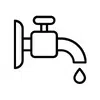

A fire at a solar farm can result in pollution as well as posing a serious threat to human life and health – consequently it’s vital you protect your solar project from fire risk.
A fire at a solar farm can have devastating consequences for the surrounding environment. This is in addition to the obvious risks fires pose to human health. The damage can include air pollution, water pollution, fatalities, bronchitis, the exacerbation of asthma, and other lung diseases in the local population.
Despite studies showing that the prevalence of solar farm fires may be underreported, there have been known instances of fire events in the solar sector that have caused significant damage to the surrounding environment.
Have you ever wondered what happens when a solar farm catches on fire? Well, earlier this year there was a solar farm fire in Australia that resulted in the loss of an area of grassland totaling five hectares, which is roughly equivalent to 12 NFL football fields. In this instance, it took the local fire department an hour and a half to get fire under control. With the remoteness of many solar farm locations, it can be challenging for firefighters to get to the scene of a fire in a short timeframe.
Here are three ways in which a solar farm fire could cause serious damage to the surrounding environment and the local population:

Stormwater runoff has been highlighted as one of the most noticeable impacts of forest fires. After vegetation has been destroyed by fire, the ground’s soil becomes hydrophobic – meaning it is unable to absorb water. This means debris and sediment is transported into larger bodies of water, resulting in the pollution of local supplies. Filtering such water sources is often costly and time-consuming.

For example, if a forest burns, then large amounts of smoke are released into the atmosphere. This smoke includes microscopic particles – often less than 2.5 micrometers in diameter, or around one-seventieth the size of a human hair. These particles are so small that our bodies find it difficult to filter them out of our airways. Consequently, they get lodged deep in our lungs.

The World Health Organization (WHO) has highlighted how forest fires can have a major impact on mortality and morbidity depending on the size, speed, and proximity of the fire. The WHO says young children, pregnant women, and older adults are the most susceptible to “health impacts” from smoke and ash. In addition, the WHO explains that smoke and ash from wildfires can greatly affect “those with pre-existing respiratory diseases or heart disease.” Meanwhile, as well as fatalities, wildfires can cause burns, decreased lung function, pulmonary inflammation, bronchitis, exacerbation of asthma, and exacerbation of cardiovascular diseases, such as heart failure.
Given that fires at solar farms pose significant danger to environmental and human health, solar farm operators must do all they can to protect their renewables from fire risk. There are a few ways to stay safe from fire in addition to integrating fire suppression systems and fire risk assessments.
With the challenges of the solar supply chain and current solar prices, it’s important to take action and prevent the worst-case scenario from occurring.
As OSTİM Defense and Aerospace Cluster (OSSA), we held a cooperation meeting with the Ministry of National Defense General Directorate of Technical Services. The opening remarks were delivered by OSSA Chairman of the Board, Mr. İbrahim Yarsan; ASFAT General Manager, Prof. Dr. Mustafa İlbaş; and Major General Ercan Eroğlu, General Director of Technical Services at the Ministry of National Defense. Following the opening session, experts from the Ministry of National Defense delivered informative presentations on “Introduction to MoD Military Factories” and “MoD Facility Security Clearance / Production Permit Certificate Processes.” As Nero Industry, we had the opportunity to present our products and capabilities to the MoD delegation and engage in bilateral cooperation meetings throughout the program.
*Legal Notice and Intellectual Property Disclaimer:
The entire content of this website including but not limited to all textual content, graphics, logos, images, photographs, illustrations, technical and scientific drawings, audio and video clips, animations, audiovisual recordings, software, source code, databases, design elements, user interface components, and all other technical and creative materials, together with all associated intellectual and industrial property rights is the sole and exclusive property of NERO Industries Defense Inc. or its duly authorized licensors. Such content is protected under the applicable laws and regulations of the Republic of Turkey, including but not limited to the Law on Intellectual and Artistic Works (Law No. 5846), the Turkish Commercial Code, the Turkish Penal Code, as well as all relevant international treaties and conventions to which the Republic of Turkey is a party, including but not limited to the Berne Convention for the Protection of Literary and Artistic Works, the Paris Convention for the Protection of Industrial Property, the TRIPS Agreement, the WIPO Copyright Treaty, and relevant European Union Directives and Regulations, whether currently in force or entering into force in the future. Unless expressly authorized in writing by NERO Industries Defense Inc., any reproduction, modification, transmission, dissemination, republication, uploading to other platforms, storage, public display or performance, commercial exploitation, or any other form of unauthorized use, whether in whole or in part, directly or indirectly, verbatim or in altered form, of the above-mentioned materials is strictly prohibited. Furthermore, any facilitation, encouragement, or promotion of such unauthorized acts is equally prohibited. Any infringement of these rights may constitute a violation of intellectual property and/or unfair competition laws and may result in civil and/or criminal liability under applicable national and international legal frameworks.
Nero Industries develops fire suppression systems, CBRN, laser warning systems, smoke launchers and military generators as one of Turkey’s leading defense industry manufacturers.
NCAGE CODE: T9830